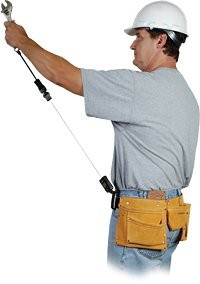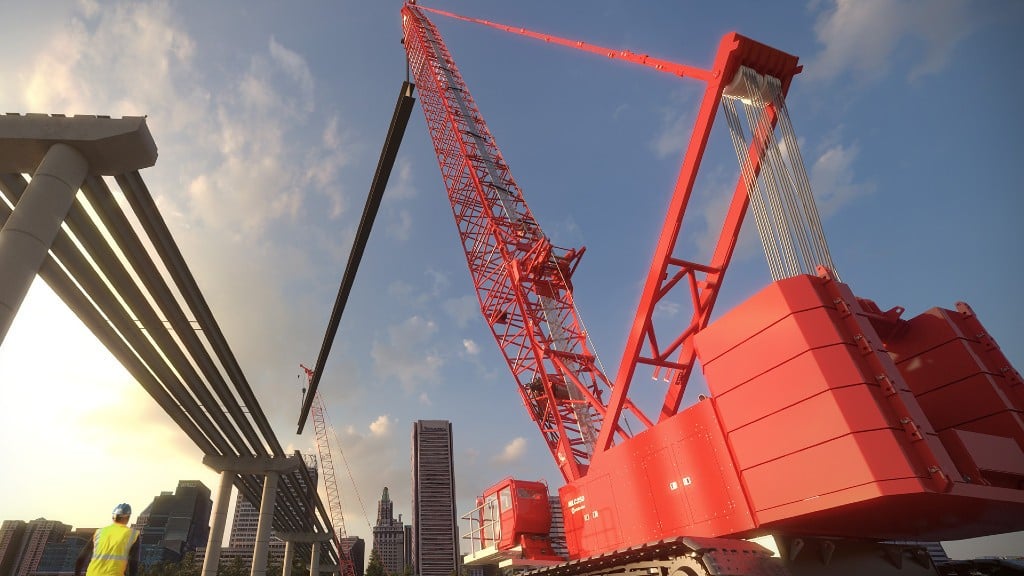
The safety engineer’s goal in correct tethering procedures is to make sure the tool, application and recoil/retraction force are in balance. When the tool is extended for use, only minimal force should be necessary so as not to cause worker fatigue or in the reverse, cause a ”kick” when retracted.
The result of correct tethering is when the tool is stored, held or used, the dangers of entanglement, fatigue and annoyance are minimized and worker satisfaction and output are maximized.
When selecting tethers for tools or instruments, here are some DO’s and DON’Ts to keep in mind.
DOs
•DO verify the integrity of a tether prior to use looking for indications of excessive wear or fatigue. (If in question, replace the tether.)
• DO always use a lanyard that is rated properly for the tool weight providing that the lanyard is designed with a 25% or more additional margin for a full extension drop.
• DO verify the tool’s attachment point to ensure that it is strong enough to hold the tool for the full drop distance of the tether.
• DO weigh tools so that a properly rated lanyard is used for the application (never assume the weight of a tool just by feel).
• DO use a quick release tether when a group of small tools are being used.
• DO use a retractable tether to avoid entanglement issues when multiple tethers are needed.
• DO anchor all tools weighing more than 10-lb to a structure, not a person.
• DO use lanyards that have very low stretch force at full extension so long as they have the proper degree of recoil for the tool and application.
• DO transfer shock loads from a person to a structure whenever possible.
• DO always check with a qualified safety professional if in doubt.
DON’Ts
• DON’T ever use a tether with lower weight limits than the tool being tethered.
• DON’T tether a tool that exceeds 10-lbs to a person.
• DON’T tether a tool to a person without verifying the impact on the persons “Personal Fall Protection” (PFP) devices.
• DON’T attach a tool tether to a structure without verifying the strength and shock-load capability of the anchor point.
• DON’T use tethers or lanyards that require excessive force for full extension. (The result will be reduced worker output and possible muscle injury.)
• DON’T modify the tool lanyard in anyway (replacement of tool lanyard components such as carabiner clips, side release disconnect clips or removal of shock absorbing components may impact the load-rating of the lanyard).
• DON’T customize the tool lanyard with hardware that does not have the appropriate load ratings for the tool. (i.e. Key rings are often considered for use as an attachment point to a tool, but typically these will not work for tools weighing more than 1-lb).
• DON’T assume that a tool tether is a foolproof device.
• DON’T use a tool lanyard as a PFP lanyard.
• DON’T use tool tethers in situations where machinery entanglement is a concern, most tool tethers will not breakaway against the weight of a person.
Tool tethers are considered the best way to protect employees, their tools, and the work site from falling objects. With over 3,000 personal tethering configuration options and covered by many patents, Hammerhead Industries is the manufacturer of the world’s largest selection of industrial tool and instrument tethering devices.They are offering their free TOOL TETHER GUIDE to help industrial safety engineers choose the appropriate “dropped tool” safety device for tools up to 35 pounds.
The free, four-page tool tether brochure containing the tethering guide and related information is available by calling Hammerhead Industries’ Customer Service at 888.588.9981.
The two-page TOOL TETHER GUIDE is also available for download at: http://www.gearkeeper.com/tooltethers/index.html
Company info
500 South C. P. Avenue
Lake Mills, WI
US, 53551
Website:
hammerheadtrenchless.com
Phone number:
920-648-4848



